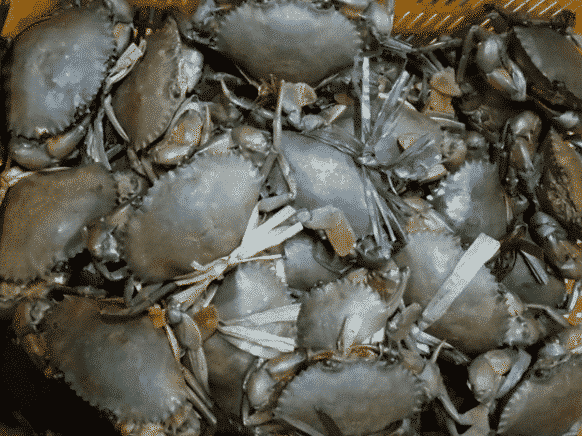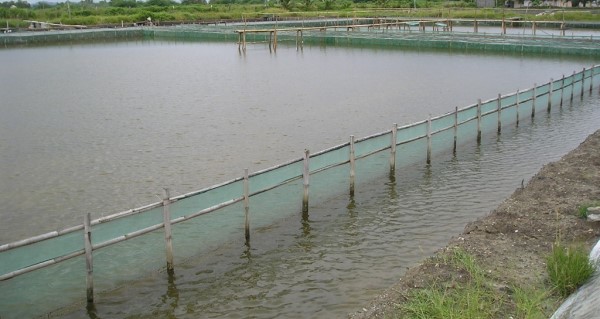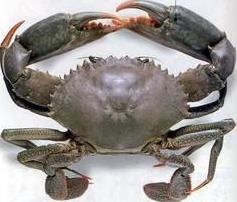Mud Crab Farming :

Introduction to Mud Crab Farming:- Mud crab (Scylla serrata) is very popular due to its great demand in domestic and the export market. The commercial scale of this culture is developing very fast along the coastal areas of India and neighbouring countries. Mud-crab farming is also becoming popular in most of the Asia countries. In India, coastal areas of Kerala, Tamil Nadu, West Bengal, Karnataka, Andhra Pradesh, Maharashtra, Goa, Gujarat, Odhisa and Union Territories are picking up mud crab culture. Mud crab is an economically important species of crab found in most regions of the world. The shell colour of mud crab varies from a deep, mottled green to dark brown. Mud crab farming is considered as an important secondary crop in the prawn (shrimp) or fish culture systems. Generally, Scylla serrata type has very good market demand and farmers can expect good profits when compared to other species of crab. Usually, the medium to large size (more than 15 cm carapace and weight of 500 grams) is preferred for export purposes.
Scylla serrata and Scylla tranquebarica are edible species of crab types. The common name for mud crab or green crab is “Scylla serrata”. Because of its meat quality and size, high price and export demand, farmers are showing interest to culture this species. Mud crab is called with different names in different states of India. Usually, mud crabs grow to a very large size of about 22 to 24 cm in carapace length and about 2 to 2.5 kg in weight. The female crabs attain sexual maturity at a size of about 12 to 13 cm in Scylla tranquebarica and 9 cm in Scylla serrata species.
Life Span of Crab:- The lifespan of a crab varies depends on species.
- Blue crab life span: 1 to 8 years.
- Hermit crab life span: 30 to 70 years.
- Dungeness crab life span: up to 10 years.
- Horseshoe crab life span: up to 20 years.
Indian Names of Mud Crab:- Crab (English), Khekra (Hindi), Njhandu (Malayalam), Kurli (Konkani), Nandu / நண்டு (Tamil), Peethalu (Telugu), Yedi (Kannada), Khekrah (Marathi), Denji (Tulu), Kankada (Oriya), Kankra (Bengali), Karacalo / કરચલો (Gujarati), Kekara (Punjabi).
Types of Mud Crab:- Well, there are two types available for commercial crab production.
- Green Mud Crab: This type of crab comes under large species and grows maximum size of 21 to 22 cm carapace width and 2 to 2.5 kg in weight. These species are distinguished by the polygonal markings.
- Red Claw: This type of crab comes under smaller species and grows maximum size of 12.8 cm carapace width and 1.3 in weight. These types of crabs are without polygonal markings and have a burrowing habit.
However, one can expect decent profits with both types as they have excellent demand in the domestic as well as international market.
Cultural practices in Mud Crab Farming:- Mainly, two types of crab culture adapted in most of the commercial crab farming systems; grow out system and fattening system.
- Grow out System (in Pond): In this farming method, young crabs are grown for a period of 6 months till they reach marketing size and weight. This type of crab farming system is generally pond based. For technical parameters required for pond construction, management, feed and other source, please go through the below paragraph which says “Technical Requirements in Pond Fattening”.
- Fattening System:
- Pond Fattening System: For mud crab fattening, one can select the size of pond from 0.025 to 0.2 ha. The suitable tidal pond depth is about 1.5 meter. For technical parameters required for pond construction, management, feed and other source, please go through the below paragraph which says “Technical Requirements in Pond Fattening”.
- Cage or Pen Fattening System: Apart from pond fattening, it can also be done by using floating cages, pens, and bamboo made cages in shallow waterway and inside large prawn ponds with good tidal water flow. The best cage size for crab fattening is 3 m x 2 m x 1 m. Netting material used in cage culture is HDPE or bamboo splits. When it comes to stocking density, it is recommended to have 9 to 10 crabs per sq. meter in cage and 4 to 5 crabs per sq. meter in pen. This type of fattening is only good for small scale farming, for large scale commercial mud crab fattening, go for pond fattening.
Note: Pond Fattening is more profitable as it takes less time than grow out system.
Technical Requirements in Pond Culture / Fattening:- The following parameters should be considered for mud crab farming/fattening system.
- Soil quality Mud Crab Farming: The best suitable soil for crab fattening is sandy clay or sandy. The reason being is, the sandy bottom discourages burrowing.
- Water quality in Mud Crab Farming: Well, water quality another major factor that influences the mud crab farming.
Brackish water would be ideal for crab fattening as mud crabs are highly tolerant to varying salinity conditions. The following quality parameters should be maintained in the pond.
| Details | Range |
| Salinity | 15 to 30 ppt. (not less than 10 ppt) |
| pH | 7.8 to 8.5 |
| Temperature | 26-30°C |
| Dissolved Oxygen | > 3 ppm |

- Pond Construction and Management in Mud Crab Farming: Preparation of pond plays major role in mud crab farming in order to achieve high yields. When it comes to pond selection and construction, Small tidal ponds ranging from 0.025 to 0.1 hectare with a water depth about 0.5 meter to 1 meter are used. Mud crab fattening is usually carried out in ponds, pens or cages. One should have proper care in building a pond for mud crab farming. The pond bottom should be sandy to discourage any burrowing. As crabs escape by burrowing through the bunds, make sure the bunds have a minimum width of 1 meter at the top. Apart from this risk, they even climb over the bunds, which can be prevented by fixing overhanging fences on dykes. Fencing height of 0.5 meter to 1 meter over the dyke should be done by suing materials like asbestos sheets, bamboo sticks or any glass panels (fiberglass is preferred). Sluice gates should be used to regulate the flow of tidal water. The sluice gates should be fitted with bamboo screens to prevent the escape of crabs. “Hide outs” out of hollow bamboo pieces, cement pipes or stones should be placed in inside the pond to prevent from cannibalism or mortality. Drain out the water and make sure it is completely dried out before liming is done in the pond. This helps in preventing from pathogens which are harmful to crabs. The pond should be always maintained with a maximum height of 1.5 meter by using high tide or sea water.
- Stocking in Mud Crab Farming: When it comes to stocking in the pond, mono-culture of crabs is preferred for better yield. Generally, soft-shelled crabs with above 9 cm carapace width or crabs weighing more than 575 grams should be stocked. The preferred stocking density is about 1 to 3 crabs per sq. meter. Use similar size of crabs and make units or compartments in the pond to prevent from cannibalism and mortality. Male crabs and female crabs can also be stocked separately. It is advised to get the soft-shelled crabs from certified hatcheries or nurseries for stoking in the pond.
- Feed Management in Mud Crab Farming: Crabs are daily fed with bivalve meat / trash fish, brackish water clams or boiled chicken waste @ 5-10% of their body weight (Generally,10% of body weight during the first week). The time period of fattening is normally 20 to 21 days. Make sure to take good care in feeding period for better growth and to avoid cannibalism. If you plan to give feed twice a day then make sure to give more in the evening time than morning time.
Harvesting in Mud Crab Farming:- The expected survival rate of crabs is 75 to 80% and an about 6 cycles of fattening can be carried in a pond in a year.

- How to find out the harvesting stage? Well, frequently crabs should be checked for their hardening.
- The crabs should be harvested after the shell hardens and before the next moulting.
- Scoop nets can be used to harvest the crabs. Even hand picking can work out.
- It is recommended picking the crabs in the early morning or evening.
- Wash the crabs to remove any dirt and tie the legs without breaking or injuring.
Post Harvesting in Mud Crab Farming:-
- Packing in Mud Crab Farming: After harvest from the water, they should be washed to remove any dirt or mud. Tie the first pair of legs by jute thread to avoid any fight that may cause injuries. These mud crabs should be packed in thermocol boxes or bamboo baskets for long distance markets. Ensuring sufficient moist conditions will make transportation easy and smooth.
- Marketing of Mud Crab: There is a good demand for live mud crab export in South East Asian countries. Contact seed food companies or agents for export information. In India market, 1 kg of live crab costs from 300 to 500 Rupees.
Production and Returns in Mud Crab Farming:- This is a rough estimate and one can expect production per crop for an area of 0.1 hectare is around 240 to 250 kg. The income from this production is about 80,000 Rs. However, these may change time to time and region to region.
You can contact aquaculture department.
I need a information package on mad crab Farming start from the construction to the selling product.
Where can I get the proper training for the crab farming project? please advice.
I need more information about mud crab, package information
Kindly tell me the minimum area and the investment of mud crab cultivation.
Thank you.
kindly tell me the area & the investment require for this project…. Near seashore sand area will do?
I love to establish mud crab fattening. Can you please send me crab fattening newsletters